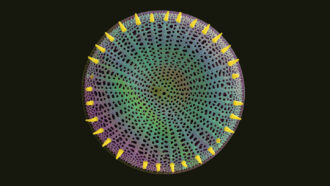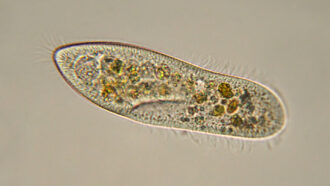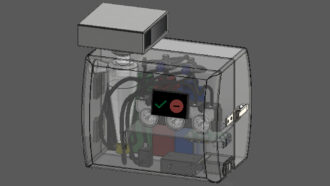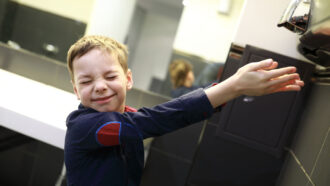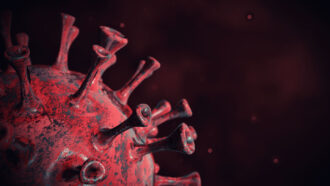Mouth germs team up to boost disease risk
Harmful mouth bacteria grow stronger by living off the wastes of harmless neighbors
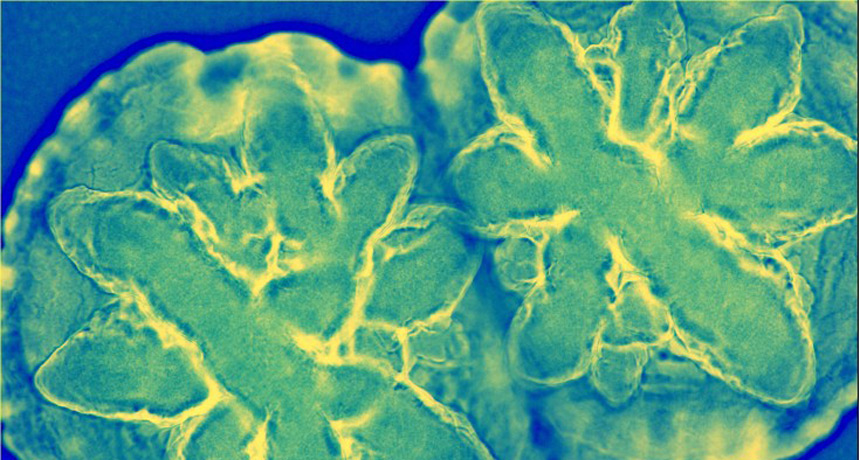
When a normally harmless species of bacteria is around, this disease-causing bacterium uses the oxygen it gives off to make more energy and thrive.
Derren Ready, Wellcome Images/Flickr (CC BY-NC-ND 2.0)
The mouth is full of germs. Many are harmless bacteria. Others may be pathogens, microbes that can cause disease. Now a study finds that the goodies can sometimes help the baddies by feeding them.
This teamwork lets infections spread more easily. But knowing how it works might point toward a new way to fight infections that attack the gums and teeth.
Scientists don’t fully understand how germs interact to cause disease, says Apollo Stacy. He’s a graduate student at the University of Texas at Austin. He also worked on the new study. Scientists tend to focus on one germ species at a time. It’s easier that way. But microbes don’t live solo. They tend to thrive in dense and very diverse communities. Studying how they interact with neighbors in those communities tends to be hard. But that’s what the new study attempted to do.
It now shows that some bacteria can change how they produce the energy needed to grow depending on who their neighbors are. One normally harmless species of bacteria gives off oxygen. A pathogenic invader species can use that oxygen to produce energy in a new way, it now shows. This is a more efficient way of making energy. And that helps strengthen the pathogen.
Stacy’s team shared its new findings online June 28 in mBio.
Borrowing from the neighbors
Chemical reactions allow an organism to use energy for growth, movements and more. This suite of reactions is known as metabolism. The new study is the first to show that a normally harmless mouth microbe can change a pathogen’s metabolism in a way that makes it more dangerous, says Vanessa Sperandio. She works at University of Texas Southwestern Medical Center in Dallas and wasn’t part of the new study. Similar partnerships have been shown between germs in the gut, she says. As a microbiologist, she studies one-celled organisms. Understanding mouth microbes is “a very new field of research,” she says. “And there are very few examples.”
Stacy and his coworkers looked at the link between two species of bacteria that tend to grow in the same place in the mouth. One is called Streptococcus gordonii (STREP-tow-KOK-us Gor-DOE-nee-eye). It’s found in healthy mouths and rarely causes disease. The other has an even longer name: Aggregatibacter actinomycetemcomitans (AG-greh-GAT-ih-bak-tur Ak-TIN-oh-MY-see-tem-KOM-ih-tans). Just think of it as the black hat of mouth microbes. It has a reputation for causing nasty tooth and gum infections.
Earlier work showed that the disease-causing bacterium grew better in the company of a sidekick. To figure out why, Stacy says, “We asked: ‘What genes do they need to live when they’re by themselves?’” The team looked at what genes were active when these bacteria lived solo. They then compared those to the genes active when the pathogen was growing alongside S. gordonii. This showed that the pathogenic germs altered their metabolism when the harmless germs were there.
Alone, the pathogens produced energy without using oxygen. But this is a very slow process. When their sidekick was near, the pathogens took advantage of the oxygen that its neighbors were giving off. And they used that oxygen to fuel their growth. When tested in mice, that oxygen boost let the pathogens grow faster. It also allowed them to survive better in a wound.
The findings are part of a growing body of research showing that bacteria can sense the presence of other bacteria and then change their behavior, says Marvin Whiteley. He’s a microbiologist at the University of Texas at Austin who worked with Stacy.
Stacy plans to test whether something similar happens in other microbe pairs. Understanding how germs team up could help doctors fight infections, he says. For instance, if antibiotic drugs aren’t killing off pathogens to clear up a bacterial infection, killing their sidekicks might help rein in the infection.
